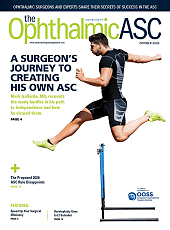After getting smacked in the face by an errant pickleball, ophthalmology resident and avid pickleball player Daniel Henick, MD, was grateful he always wears eye protection. But he noticed he’s typically the only one on the court who does. As an ophthalmologist in training, he knows pickleball injuries are no joke. So, Dr. Henick, who is doing his residency at Yale-New Haven Medical Center, conducted a study to better understand protective eyewear usage beyond his home court. The findings from his survey will be presented this week at AAO 2025, the 129th annual meeting of the American Academy of Ophthalmology.
To evaluate eye safety habits among professional and amateur players, Dr. Henick distributed a survey at pickle ball facilities and reviewed footage from a recent professional pickleball tournament. A total of 148 responses were collected from amateur players in New Haven county.
After analyzing the data, Dr. Henick found that the professional players were the least likely to use protective eyewear. He said this finding is concerning. While eye protection is recommended for players at all levels, Dr. Henick theorizes that professionals may be at higher risk for injury due to the fast-paced nature of these games.
Key findings from the study include:
-
20% of professional pickleball players used protective eyewear
-
54.5% of amateur pickleball players wore protective eyewear
-
Among amateurs, younger players were less likely to use protective eyewear
-
Of the 67 players who endorsed protective eyewear use, 26 reported using dedicated protective eyewear while the remaining 41 used their regular prescription glasses
While brightly colored, plastic, perforated pickleballs look harmless, they can inflict serious harm on an unprotected player. The average pickleball serve can travel up to 40 mph, according to a previous study. Players have experienced a range of eye injuries, including bruising, a black eye, corneal abrasions, and vision-threatening tears in the retina.
Dr. Henick’s survey showed that most players didn’t wear eye protection because they were either unaware of the dangers or were concerned that the eyewear would be uncomfortable or would interfere with their game.
“Most people think that eye injuries rarely happen when a ball is hit by an opposing player across the net, but in truth, injuries are more likely to happen when the ball bounces off your or your partner’s paddle at an unusual angle towards your face and eyes. You can’t prepare for or have the reflex speed to deal with these deflections, so the best protection is to always use protective eyewear,” Dr. Henick said.
Dr. Henick hopes his study inspires more awareness campaigns that educate players of all ages and levels on the importance of high-quality eye protection. He also believes that creating more comfortable protective eyewear is a key element to increasing eye protection use.
“I want people to understand that eye protection is a small investment that can make a humongous difference,” Dr. Henick said. “And it’s not just for people who need glasses to see. My hope is that this study is the beginning of a long-term initiative for changing the culture of protective eyewear in pickleball.”








